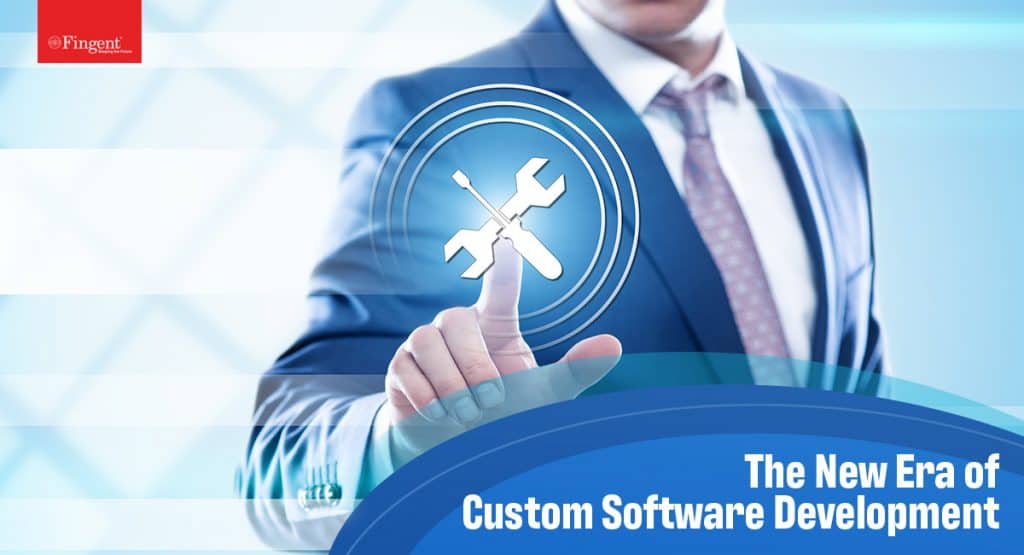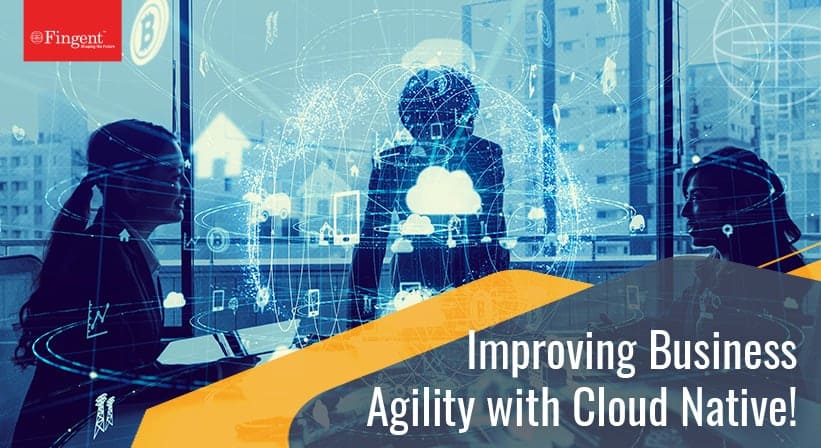Category: Digital Transformation
If you’re a business with an expanding online retail footprint, your hard work actually begins once a customer places an order. Each new order triggers a multifarious chain reaction, right from confirming the order through payment acceptance to picking, packing, and finally shipping the consignment to the right location. As digital shopping becomes the primary buying method today, it’s important for brands to simplify online ordering for their customers.
How can you make your order processing and fulfillment smooth enough for both your customers and employees?
If you’re a small business, you might be able to handle your orders with basic pre-packaged software. But as your business grows, you need a customized order management system to fulfill the orders gushing in. With a custom order processing software, your business can bring the best of both worlds, that is, streamline your order processing and fulfillment and simplify order placement for your customers.
View Infographic: Custom Software vs. Commercial Off-the-shelf Solutions
What is an Order Management Software?
Order management refers to the set of processes used by an organization to track, manage, and fulfill an order, right from the time when it (order) is placed by a customer to when it is safely delivered at the right destination.
Order management systems are software tools used to monitor the end-to-end customer order journey. With order management software, you can organize and automate processes, keep track of your merchandise, control the delivery process, and ensure that your customer receives the right order at the right time in a good condition.
Say you’re running an online medical procurement store. A clinic places an order with you for disposable saliva ejectors. Your order management software checks if the payment was successful, send the order details to your warehouse, tracks the order form when it is being picked, packed, and shipped, and finally ensures that the saliva ejectors were delivered properly.
Modern order management systems are capable of going beyond delivery and order fulfillment. They can record customer service actions, track returns or exchanges, prevent shipping errors and processing delays, and save profits by reducing refunds and reshipping costs. By collecting vital metrics that define your success and efficiency, your business can identify what’s working and what needs to be improved.
Why Do You Need a Customized Order Processing Software?
Investing in an off-the-shelf order processing system is enough if you’re content with your business’s status quo. But it wouldn’t suffice if you’re thinking of expanding your business. Offering personalization is the only way to make yourself stand out from the competition and attract more customers. That means, making some serious changes to your existing workflow. When you try to alter your current workflow to incorporate personalization, your canned software offers limited ways to do it successfully. This is where a custom software solution comes to your rescue.
Watch Video: Why Your Business Requires Custom Software
Custom order management software allows you to configure the workflows required to meet your specific business needs. If off-the-shelf software provides you with 80% of the functionality, custom software allows you to tailor the remaining 20% (or even more) to enhance your workflows and make your business future-proof.
Some Inspiring Stories
We’ve done it in the past and we’re doing it now as well!
We’ve simplified what was once considered complex order processing, with custom-built ordering software that lets customers place orders quickly and allows businesses to track every order with improved efficiency and sophistication. Here’re a few inspiring stories.
1. Cheetah Transportation Systems
Texas-based Cheetah Transportation Systems leveraged Fingent’s custom software development services to implement a personalized transportation management system. The new system allows Cheetah’s customers to view their order status in real-time and access up-to-date shipping data. With a customized software solution, Cheetah re-imagined their logistics and supply chain operations:
- Streamlined and accelerated ordering, tracking, and delivery processes
- Cut licensing and subscription costs by eliminating complex third-party software integrations
- 30% improvement in Turn Around Time (TAT)
- 40% time-saving attained through automated tasks and real-time reporting
2. AEC Advisors
Another pretty interesting digital transformation story is that of AEC Advisors. The New York-based investment banking and corporate finance advisory firm experienced a business transformation with a customized survey management cum analytics and reporting software developed by Fingent.
- Ability to create and circulate customized surveys prior to the yearly conference held by AEC Advisors
- Quickly generate KPI reports based on survey responses
- Secure, scalable, and flexible IT architecture to address AEC’s specific needs
- Make it convenient for AEC’s clients to securely share complex financial information
3. Lakeside Cabins
A custom order management application for a manufacturer who builds customized sheds for growing families needing more space! That’s the story of Lakeside Cabins, headquartered in Ohio. The manufacturer wanted us to build an in-house software customized to support the different stages of their building processes. Fingent created a personalized, flexible, easy-to-maintain, and scalable order management software with the following features:
- Custom-built 3D configurator that allows customers to configure building designs, generate floor plans and invoices, and reduce human errors
- Integrated modules to manage CRM, dealers, orders, purchase orders, work orders, and route-optimized delivery schedules
Interested to explore similar success stories? Click here to read our top case studies.
Business Benefits of Custom Order Management Software
1. Features that fit your business needs
A customized order management software offers the best features your business would actually require. Collaborate with the right software development partner to identify your unique business needs. Avoiding unwanted features helps you get cost-effective custom software within a shorter development cycle.
2. Flexibility
Your customers may want to split orders and deliver them to multiple addresses. Using an off-the-shelf software to split your shipments will increase your fulfillment costs due to longer development cycles. A customized order processing software offers the flexibility to split consignments, choose multiple payment modes for a single order, and a horde of other capabilities that will enable you to deliver an Amazon-like experience to your customers.
Read more: Custom software solutions – the ideal way to build business apps
3. Easy to integrate with other tools
Most off-the-shelf software don’t offer flexibility in integration, making you spend more on missing software integrations. In contrast, custom order processing software offers makes it easy to integrate with necessary third-party ware that can improve the accuracy of your order fulfillment process. Fingent develops powerful APIs and plugins that support seamless integration of third-party tools with your custom software.
4. Automation of mundane tasks
When your custom order management software does the heavy-lifting by automating invoicing, billing, banking integration, payment, and stock management, you can focus on improving your customer service. Automating mind-numbing operations will allow you to keep your order processing tasks much more organized and easier.
5. Flexible pricing
Most pre-packaged order management solutions offer functionalities that your business doesn’t require and demand you to pay extra for useful features. A custom software solution is designed and developed after defining your objectives clearly. So you end up paying only for the features you use.
Read more: Know What’s Driving Custom Software Development Costs in 2022
Develop Your Custom Software Application with Fingent
When you’re in complete control of your order management system, you will attain better visibility, productivity, and cost control. Custom software befits businesses of any size- small or large, as it can save your costs and support your long-term growth plans. Whether your requirement is to develop a custom inventory/ order/ warehouse/ transportation management software, our developers have considerable experience in handling anything that comes our way.
Read more: How to Choose the Right Custom Software Development Firm
Our core experience in developing B2B e-commerce applications, customized product ordering systems, tailored self-service payment portals, and an array of bespoke software solutions makes us a trusted software development partner to hundreds of organizations worldwide, including Fortune 500 companies.
If you want to learn more about custom software or would like to know how it can improve your bottom line, get in touch with us.
Stay up to date on what's new

Featured Blogs
Stay up to date on
what's new



Talk To Our Experts
Data is the very foundation of insurance operations. Until the introduction of modern data analytics technologies, insurers used to make decisions based on the insights garnered from historical data. The advent of cloud computing, the divergence of data sources, the instrumentation of datasets, and the availability of real-time data have fundamentally transformed the way insurance operates today. Modern insurance carriers seek innovative methods to visualize and contextualize data from both physical and digital assets. With digital twins, insurance leaders can make the most of data, assess their readiness to face disasters, prevent damages before they occur, and optimize core insurance operations. This post explores why digital twins are vital for insurance companies in the future.
Read more: Is Digital Twin Promising A New Era for Healthcare?

The Importance of Digital Twins in Insurance
Digital twins are computerized models or virtual replicas (simulations) of physical objects such as devices, assets, products, or processes. The biggest advantage of digital twins is that they operate in real-time, taking cues from updated data. This holds immense potential for the insurance industry, which heavily relies on data insights to make critical business decisions. Digital twins leverage connected technologies (IoT, sensors, real-time data monitoring systems) to help insurers define new policies or packages, mitigate risks, reduce administration costs, and enhance core insurance operations such as underwriting, claims processing, new policy creation, fraud detection, customer assets evaluation, etc. They also allow insurance companies to prevent unplanned downtimes and discover new growth opportunities.
These stats prove why digital twins are important for insurance companies going forward:
- Data Bridge Market Research estimates that by 2027, the global digital twin financial services and insurance market will account for USD 77,530.82.
- 87% of insurance executives agree that digital twins will strengthen their ability to collaborate in strategic partnership ecosystems, crucial for long-term success.
- 93% of insurance executives realize the necessity of a centralized and intelligent data hub that helps them understand the defects of their current processes and remodel their operations.
Digital twins can act as a virtual insurance lab for executives to predict and evaluate any risk scenario and make smart decisions. With digital twins, Insurance is moving to Assurance, a new business model that saves huge compensations from being paid off by averting losses before they occur. Let’s consider the example of a cargo vessel that is ferrying goods from one port to another. Telematics is alerting the vessel’s crew that the ship will soon be exposed to a sea storm. The vessel’s digital twin can collect data from the entire ship’s systems and assess how the storm will impact the vessel. This enables the captain to quickly turn their route and reach the safest port nearby. This is a classic example of how digital twins help upgrade insurance into assurance.
Digital Twins Can Improve Core Insurance Operations
Digital twins transform five core areas of insurance operations:
1. Underwriting
Underwriting refers to the process of pricing risks based on risk assessment. With real-time streaming of data and virtual simulations, underwriters can gain a better understanding of pricing risks based on different scenarios. Digital twins allow insurers to analyze more heterogeneous datasets within a short span of time, such as cases of heart attacks, house fires, vehicle mishaps, earthquakes, floods, and other catastrophic incidents that don’t occur frequently. This enables underwriters to fix more competitive premiums. Commercial line insurers can leverage digital twins to process workers’ compensation claims more effectively, reduce premium audits, and customize premiums to match the changing workforce.
2. Distribution
By creating virtual replicas of customer habits, insured assets, and external events affecting customers’ assets and decisions, insurers can gain a more comprehensive view of the volatile market. Digital twins can simulate consumer behavior patterns based on their online activities, shopping data, and search habits. This allows insurance executives to understand customer journeys and practice context-relevant selling across the omnichannel spectrum. Insurers can also push one-click purchases across different customer touchpoints to boost distribution. The more you know about the customer, the better you can provide personalization. With online simulations and near-real visualizations, insurers can improve cross-selling and upselling.
3. Claims Processing
Digital twins help fast-track claims processing by reproducing the scenarios or circumstances behind the appeals, such as conditions of damage, car accidents, fire breakouts, etc. Claim adjusters can leverage digital twins to simulate accidents and assess their impact on the claimant’s property or other valuable possessions. This avoids the need for expert examination and helps precisely determine the insurance company’s liability. To prevent unwanted delays in claims processing, executives can compare the virtual and physical records of an accident or a house fire. Thus, digital twins in claims processing allow insurers to respond quickly to their customers.
4. Back-office Administration
Like HR, Finance, Procurement, Inventory, and other corporate functions that can be augmented with automation, several back-office operations in insurance companies can be improved using digital twins. It’s possible to create the virtual simulation of a blockchain-based smart contract prior to implementing the actual contract. Insurance carriers, customers, claim adjusters, and relevant policy stakeholders can explore how the smart contract would work in real-life and ascertain how secure the contract would be. While blockchain ensures transparency and trusted execution of smart contracts, digital twin stores and evaluates the insurance data in real-time. This helps avoid any legal disputes and complications in the future.
Read more: How Blockchain enables the insurance industry to tackle challenges
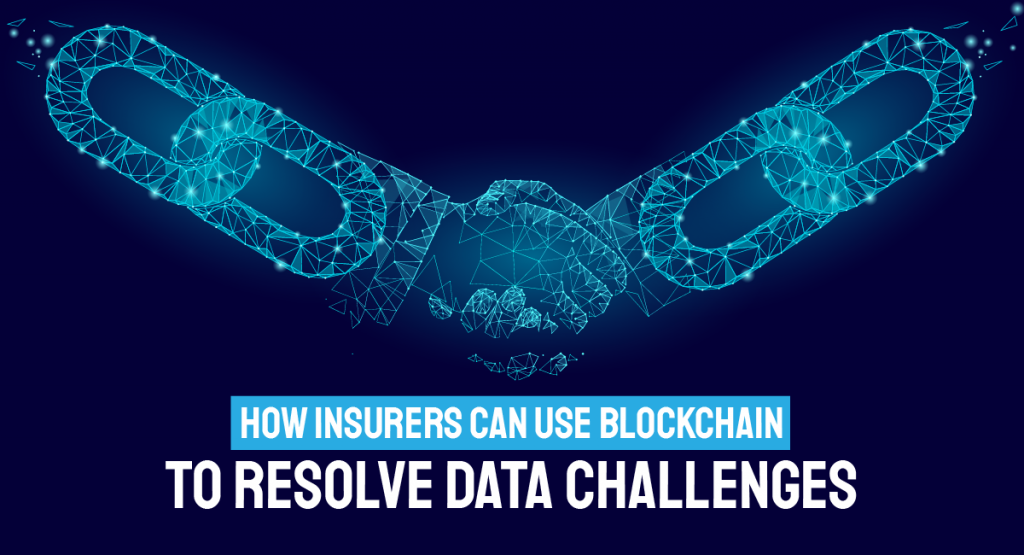
5. Fraud Detection
FBI reports that in the United States, the total cost of non-health insurance fraud alone accounts for USD 40 billion per year. The rising insurance fraud costs force carriers to increase their premiums, which has a direct bearing on many American families who will have to pay higher premiums every year. Thanks to digital twins, it’s now possible to reproduce an event that resulted in a catastrophe or damage. Claim adjusters can determine the claim’s accuracy by comparing the applicant’s data with the simulated version of the incident. As a result, inconsistent claims can be detected quickly to reduce the carrier’s liability and save costs.
Leading Insurers Are Experimenting with Digital Twins
Leading reinsurer Swiss Re has partnered with Microsoft to establish a Digital Market Center for building “risk digital twins” – a virtual world that leverages AI and big data to create simulations expounding different risk scenarios. Swiss Re uses this knowledge to forecast supply chain risks, disasters, and other financial exposes. It allows insurers, business owners, and end consumers to make cost-effective and timely interventions.
Read more: Transforming Insurance with AI

Piprate, an Irish Insurtech startup joined the Digital Twin Consortium in 2020 to promote the potential of digital twin technology in the insurance industry. Piprate builds digital twins of insurance risks to solve the industry’s predicaments related to vital financial data acquisition and data sharing.
AI Journal reports that the insurers who participated in their pilot study titled “Digital Twins of Risk AI” (a UK grant-funded project) were able to gain a 360-degree view of risk in real-time across 100% of their portfolios.
Looking Ahead!
To face the disruption and navigate the uncertainty triggered by the COVID-19 pandemic, insurers need to evolve from self-contained businesses to strategic players in a partnership ecosystem. Besides streamlining data from discrete devices, digital twins offer a valuable source of intelligence for insurers. Following the unpredictable times ahead, insurance leaders will have to rethink their long-term plans and gain the ability to amend packages and make interventions in real-time. Fingent enables insurance leaders to prepare for a more agile and intelligent future by leveraging digital twins and other leading insurance technologies.
Get in touch with us to know more!
Stay up to date on what's new

Featured Blogs
Stay up to date on
what's new



Talk To Our Experts
Reinventing. Transforming. Scaling – that is what Cloud Native can mean for businesses today!
Cloud-Native can help businesses achieve phenomenal success and improve their ability to deliver more features faster to their customers. It can bring in a major competitive advantage.
This technology increases the velocity of the business and the method to structure their teams to take advantage of automation and scalability.
Are you a business that is starting a digital transformation journey? Or are you wondering what Cloud Native is and why you need it?
This blog describes the advantages of Cloud Native capabilities to speed up your productivity and increase your company’s innovation output. It also discusses upcoming trends to look for.
Read more: Unlocking Opportunities with Cloud Continuum!

Can Moving to a Cloud-Native Approach Improve Business Agility?
Most organizations today are in the midst of a massive data transformation to out-innovate their rivals. The Cloud Native approach allows organizations to build modern applications by leveraging its benefits based on the pay-as-you-go pricing model.
Here is how moving to a Cloud-Native approach improves your business agility:
1. Increased Reusability Reduces Development Costs
Moving to the Cloud Native approach enables developers to build apps that function like building blocks that can be used later for other projects. It makes it easier for developers to access and reuse components created for earlier projects.
How does this improve business agility?
- Simplified development process: Instead of spending time on building the common framework, developers can spend more time on a project’s specifics. This means they can develop more sophisticated applications in less time.
- Faster delivery: All deliveries are time-sensitive. A cloud-native approach enables you to seize the time-sensitive opportunity by reducing the time to market.
- Testing made simple: Cloud-Native uses microservices that present fewer problems. When the load on the pipeline is lightened, the testing is simplified.
2. Better Customer Experience
Two types of customers are affected by the Cloud Native approach – external customers (those who purchase from you) and internal customers (those development teams).
- Internal customer: Your internal customers or the development teams maintain and manage the systems that your external customers use. Fostering agility in your internal teams improves employee engagement and in turn rewards external customers. Developers are smart people who want to spend their time solving complex problems instead of focusing on just ‘keeping things running.’ The Cloud Native approach automates predictable problems, making better use of your internal team. This allows them to focus more on driving innovation.
- External customers: Building and delivering solutions in response to customer needs will attract and retain customers, in effect building enduring success. Cloud-Native helps find and fix problems faster. It is especially beneficial to businesses with apps that required frequent updates. Cloud-Native gives you a reliable way to deliver those updates in a seamless, resource-efficient manner. This means there is little or no disruption of services during updates while improving responsiveness to the demand they might have.
3. Improved Business Continuity
Downtime can be detrimental to a business’s survival. However, Cloud Native offers a remedy to this. Moving to Cloud-Native keeps operations lean enough to survive whatever turn the market takes.
It also improves business continuity and aids in disaster recovery as it reduces downtime and increases resource availability. It allows employees to work from any location and enables integrated and automated backups. It can also unify processes on a single interface and improve visibility.
4. Ability to respond to shifting market demands
Cloud-Native is a significant means of spotting an opportunity a moment before a competitor. It provides businesses the ability to respond in hours to sudden changes in the market.
Cloud-Native apps are ideal instruments in turbulent or hypercompetitive markets. Whether a business needs new ways to connect with customers or is undergoing digital transformations, Cloud Native apps enable them to take advantage of sudden opportunities in the market.
Read more: Cloud-Native Application Development: How It’s Powering App Delivery

A Look into The Cloud Native Upcoming Trends
Here are the most relevant Cloud-Native trends businesses can watch out for:
1. Serverless Computing
Serverless computing is a next-gen technology that ensures agility, cost-effectiveness, and scalability. Essentially, it is a new way of running applications and services that enables developers to focus on building customer-centric applications and optimizing application design.
The operational cost of serverless computing is much lower as it enables IT and development teams to work together. It allows them to share the responsibility of developing and maintaining a product.
2. Distributed Cloud or Multicloud
Another noteworthy trend is the adoption of distributed cloud. It is a method that combines the benefits of the public cloud with an organization’s ability to maintain governance of the infrastructure.
Distributed cloud or Multicloud allows businesses to use the infrastructure of multiple cloud providers simultaneously. You can leave IT management to the providers by deciding the location of the individual services and data archives.
3. Composable application
In the future, businesses will have to free themselves from the rigid divisional barriers that are not compatible with the flexibility of organizations.
A composable application will allow for a more modern software design and organization model. This will allow businesses to quickly create and dispose of the features that are according to the specific business needs.
4. Law-code or No-code
The ability to perform multiple business operations with minimum dependency on the technology team is key to business growth and sustainability.
Using Kubernetes, organizations can create flexible solutions that extensively use low-code or no-code tools. Given that, the non-technical team is free to focus on their roles without specific programming skills.
Read more: A Comprehensive Guide To Modern Cloud Application Development

Become Future Ready
The Cloud Native approach proposes a truly effective model and makes business innovation through the integration of applications.
To embrace the benefits of the cloud, be ready to embrace changes within your entire project lifecycle. In other words, adopting Cloud Native applications means being ready to welcome future developments in cloud services.
It means opening the doors to opportunities for the future digital business. The cloud-native approach not only helps business innovate faster but help them react to marketplace events with more agility. Wondering how to make this happen for your business?
Let’s have a chat!
Stay up to date on what's new

Featured Blogs
Stay up to date on
what's new



Talk To Our Experts
The COVID-19 pandemic has accentuated the need for resilient supply chains and human-machine collaboration at work. Full or partial shutdowns, as well as social distancing regulations, impose factories and workspaces to operate with the minimal onsite crew. Despite labor shortages, supply chain disruptions, and other production challenges, manufacturers are under constant pressure to respond to the evolving market needs. The demands for mass customization, quality expectations, faster product cycles, and product variability are at an all-time high. Tackling these persistent challenges requires combining human skill and ingenuity with the strength and speed of robots. To bring the best of both worlds – human creativity and robotic precision – manufacturers should adopt cobots (collaborative robots) that can reduce human interaction in feasible situations and accelerate production cycles.
Cobots allow manufacturers to maximize production and address the changing demands while ensuring the safety of their employees, clients, and partners. Why are cobots the future of manufacturing? How do they help build manufacturing resilience? Let’s explore further in this blog.
Read more: What are cobots and how can they benefit industries
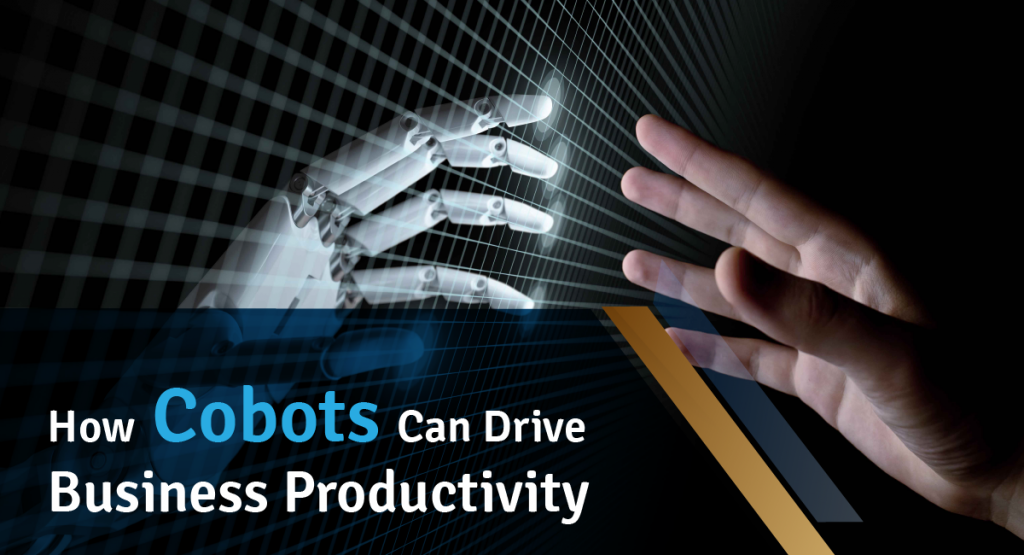
Cobots Enhance Manufacturing Efficiency
Collaborative robots or cobots are designed to safely work alongside humans in tedious, dull, and hazardous environments. Unlike the traditional industrial robots that work in fenced premises to avoid close proximity with people, cobots operate in a shared workspace alongside human labor. For instance, a robot that helps humans sort foam chips in a lab is a cobot, while a robot welding a sharp cutting tool in a restricted factory area is a typical industrial robot.
Conventional industrial robots have long enabled manufacturers to leverage automation and compensate for labor shortages, but they are typically designed to execute one specific task. Moreover, they lack the cognitive capabilities possessed by humans to reprogram their operations based on new circumstances. In contrast, cobots don’t require heavy, pre-programmed actuators to drive them. Cobot motions are steered by computer-controlled manipulators, such as robotic arms, which are supervised by humans. Thus, cobots facilitate effective human-machine collaboration at work.
Cobots can be programmed to perform a wide range of tasks in a factory setting such as handling materials, assembling items, palletizing, packaging, and labeling, inspecting product quality, welding, press-fitting, driving screws and nuts, and tending machines. While cobots attend these mind-numbing jobs, human workers can focus on tasks that require immense resourcefulness and reasoning.
Read more: Digital Transformation in Manufacturing
Benefits of Cobots in Manufacturing
Modern manufacturing requires effective human-machine collaboration to cut expenses, reduce time-to-market, and address growing customer demands. Here’s how cobots empower manufacturing enterprises.
1. Easy to Deploy and Program
It takes days and weeks to install and program a traditional industrial robot. A cobot, on the other hand, can be set up in less than an hour. They are lighter than conventional robots. With user-friendly mobile applications and customized software, you can swiftly program the cobot to get started. Right software configurations enable cobots to learn new actions, without any specialized training. Using intuitive 3D visualizations or simple graphical representations, you can move the robot arm to preferred waypoints. Your employees can focus on more critical tasks while the cobot takes care of mundane jobs.
2. Flexible to Perform Different Tasks
Cobots can be easily shifted from one workstation to another due to their flexible hardware. With minimal software customizations, cobots can be re-deployed or repurposed to perform different functions across various departments. For example, a cobot that performs picking and packing can be re-programmed as a filler by replacing its robotic arm with a tube and nozzle.
Read more: Challenges, Opportunities, and Technologies That Will Revolutionize Manufacturing

3. Save Production Cost and Time
A study conducted by the World Economic Forum in association with Advanced Robotics for Manufacturing found that collaborative robots can cut nearly two-thirds of the cycle time required to pack boxes onto pallets. Because cobots are designed to work without any breaks, they reduce the idle time between cycles. The International Society of Automation reports that cobots can save production costs by reducing 75% of manual labor. Traditional robots increase the installation costs for manufacturers as they need to set up additional safety measures around the deployment area. Cobots don’t incur such extra expenses as they can be set up in close proximity to humans.
4. Improve Employee Engagement and Productivity
Cobots work in collaboration with people to refine and process the tasks better. They can never replace the human touch in production. When cobots take care of repetitive tasks such as screwing a bottle or packing medical equipment, employees can focus on more important functions such as running quality checks or inspecting a worksite. It allows manufacturers to optimize their productivity and boost employee morale. Businesses can also prepare their workforces to learn new skills.
5. Maintain Consistency and Accuracy
From the first to the hundredth task, cobots maintain the same level of accuracy and consistency. Humans can get drained easily, whereas a cobot never deviates from the actions for which it is set up. This helps ensure high product quality and uniformity. With the right software and hardware configurations, cobots can produce more finished goods at an incredible pace, faster than handcrafting.
Cobots and The Future of Manufacturing
Industry 4.0 paved the way for automation and smart manufacturing powered by data-driven technologies such as IoT, cyber-physical systems, wearables, AR, cloud computing, artificial intelligence, cognitive computing, and so on. Though the sole focus of Industry 4.0 is to improve process efficiency through physical and digital integration, it accidentally ignores the significance of human value in process optimization. Industry 5.0 re-shifts its focus on human value by fusing the roles of mechanical components and human workers in production. This makes cobots the very foundation of the next wave of the industrial revolution, that is, Industry 5.0.
Denmark-based Universal Robots reports that cobots are at the heart of Industry 5.0. Cobots democratize robotic capabilities, thereby serving as a personal tool that can be leveraged by any member of the workforce to apply creative skills and generate more value. Cobots can be used as a plug-and-play solution across a variety of manufacturing and industrial operations such as automotive production, food processing, chemical plants, medical devices, and kits, among others.
Since they collaborate well with humans in a safe environment, cobots will:
- augment intelligent decision-making,
- drive high-quality products to the market,
- enable mass customization and personalization,
- optimize manufacturing costs,
- generate new job roles (eg: Chief Robotics Officer), and
- boost virtual education to make the most of collaborative robotics.
Read more: How Custom Software Development Helps Manufacturing Industry
How We Help Manufacturers Leverage Cobots and Other Emerging Technologies
As technology matures, manufacturing enterprises need to build use cases that prove the inevitability of human-robot collaboration. We help develop POCs and use cases that demonstrate how your business can benefit from cobots. Our experts can develop your cobot management software or mobile app from scratch or customize your existing software to address the evolving market demands. Fingent can work along with your cobot hardware manufacturers to develop a robust software orchestration layer that can control the movement of your cobots. We also simplify the training process to help you get started in no time.
Stay up to date on what's new

Featured Blogs
Stay up to date on
what's new



Talk To Our Experts
Better businesses need better cyber security.
Regrettably, threats to cyber security have become the new norm across public and private sectors. The pandemic affected all types of businesses. If anything, uncertainties around remote working amplified cybercrime. As a result, cyber security’s importance has become more clear now than ever before.
As cyberattacks become more sophisticated, businesses will have to stay one step ahead. Security professionals need strong support from advanced technologies like Artificial Intelligence (AI) to protect their companies from cyber threats.
AI can enable security teams to handle greater and more complex threats than ever before. More specifically, it has proven to identify and prioritize threats. In some cases, AI has even taken automated action to quickly remediate security issues. This article considers how AI can redefine the cyber security needs of an organization.
Before we discuss further, let’s find out the impact cyberattacks can have on businesses.
How Cyberattacks Affect a Company’s Performance and Value
Protecting a company against cyber threats is costly. It can impact the relationship between your company and your customers.
Unfortunately, cyber threats are never static. Millions are created each year and are becoming more and more potent.
In a survey conducted by Hiscox-Cyber Readiness Report, 28% of the businesses that suffered attacks were targeted on more than five occasions in 2020. Companies have lost millions to such cyber security breaches. Companies like financial services, technology, and energy were hit the hardest.
That is not all. Cyber security breaches have caused several other damages including:
- Outlays such as insurance premiums and public relations support.
- Operational disruption.
- Altered business practices.
- Business’s standing and customer trust.
- Stolen intellectual property including product designs, technologies, and go-to-market strategies.
- Legal consequences.
Read more: Quantum Vs Neuromorphic Computing – What Will the Future of AI Look Like!

How AI Contributes to Cyber Security
Cyber threats are real and certainly worrisome to businesses. It is important to protect critical digital assets.
However, it takes planning and commitment of resources. With good security operations, you can stay on top of most of the most serious cyber threats. True, there may be smart thieves, but Artificial Intelligence can provide smarter security.
Here are 5 specific ways AI can contribute to cyber security:
1. Robust Zero-Day Malware Detection
Malware is unpredictable. And signature-based tools will not detect attacks that have never occurred before. Given that, is it possible to defend against something unpredictable? Yes!
AI is cable of grasping all the possibilities and finding relationships that traditional security tools would miss. While traditional security strategies have their place in cyber security, they are insufficient to detect and prevent zero-day attacks.
Zero-day attacks are best detected by automatically identifying aberrant behavior and alerting administrators immediately. AI can enable organizations to be more proactive and predictive with their security strategies.
Artificial Intelligence provides visibility and security for an organization’s entire data flow. AI helps organizations gain such visibility by dismantling each incoming file to search for any malicious elements. Simultaneously, it also looks at the user and network behavior and anomalies from expected activities.
Together with ML, AI adapts its behavior to new network conditions, constantly adapting to evolving security conditions. Even those hackers who use modern ML penetration methods cannot be fool AI-enabled cyber security.
We cannot stop security breaches from happening. But Artificial Intelligence helps organizations avoid potential disruptions before attackers wreak havoc.
2. AI Can Safeguard Large Amounts of Data
Whether a company is small or mid-sized, there is a lot of data exchanged between customers and the company every day. This information must be safeguarded from potential cyber threats. Cyber security experts cannot always inspect all the data for potential threats.
AI is the best option to detect threats to routine activities. Because of its automated nature, AI can sift through large amounts of data in real-time and identify any hazards lurking amid the chaos.
Read more: Artificial Intelligence and Machine Learning – The Cyber Security Heroes Of FinTech!

3. AI Takes Care of Redundant Cyber Security Operations
Hackers constantly modify their methods but the fundamental security practices do not change. Plus, they may weary your cyber security worker.
Artificial Intelligence takes care of redundant cyber security operations while imitating the best of human traits. It also does a thorough analysis of the network to locate security flaws that may harm your network.
4. AI can boost response time
Ideal security is the one that can detect security threats in real-time. The principle of ‘a stitch in time saves nine’ applies here.
Integrating AI with cyber security measures is a sure way to detect and respond to attacks immediately. Unlike humans, AI does not miss a spot when examining your system for risks. Besides, it can detect risks early, thereby boosting response time.
5. Authenticity Protection
Most websites allow users to log in and access services or make purchases. You will need greater protection as such a site contains private information and sensitive material. To maintain customer trust, it is important to ensure all data about your guests remains safe while accessing your site.
Artificial Intelligence can provide an enhanced security layer. AI can secure authentication when a user wishes to connect their account. Login measures like CAPTCHA, fingerprint, and facial recognition are used to determine if the attempt is legitimate or not.
Read more: Safeguarding IT Infrastructure from Cyber Attacks – Best Practices

Do Not Be Afraid!
Fingent is your reliable security partner. We provide professional security with reliable service. As a proactive security partner, we look ahead to ensure your business is successful far into the future.
Using AI’s real-time monitoring capabilities, we can spot potential issues before they become a major problem. Security experts Fingent are aware that cyber security threats are not limited to work hours. Our professionals at Fingent software development experts will be there for your business whenever you need us.
We are in business today because of the reputation we built with our customers. We offer a unique level of enterprise IT support, and our clients can rest easy knowing that their business is always protected.
Give us a call and let’s discuss your security needs.
Stay up to date on what's new

Featured Blogs
Stay up to date on
what's new



Talk To Our Experts
AI is not just a technology; it has become part of daily lives. Thanks to AI, we witness new kinds of development in each sphere of life every day. We can access many points with AI now more than we could ever before. From the research that we do on the internet to the goods that come to our doors, AI is directing our lives and business. It has solved many problems faced by humanity. And, revolutionized technology in all industries.
Coined at Dartmouth College in 1956, Artificial Intelligence (AI) gave succeeding generations a potential for information technology that can benefit humans in a profound way. Apart from bringing efficiencies, AI is also bringing new possibilities. These possibilities continue to create new models and opportunities for businesses that tap into them. Quantum and neuromorphic computing is the way forward.
This blog takes a deeper look into quantum and neuromorphic computing and explores which companies can benefit from these technologies.
A Look at The Future Of AI
The possibilities Artificial Intelligence can create are seemingly endless. Innovations are constantly taking place in the AI world. Given that, many business and information technology leaders are looking to better understand how it will affect their business now and in the future.
Taking a look at the future scenarios for how AI could evolve can help IT leaders demystify this emerging technology. Two such technologies are called neuromorphic or quantum computing. They offer us a new way forward by fulfilling our AI-related dreams. The quantum computing market alone is expected to reach $2.2 billion by 2026, so it’s definitely worth looking into.
The future of AI also depends on improving the capacity of intelligent systems by using powerful hardware. Hardware such as neuromorphic computing and quantum computing will allow companies to build AI solutions that are extremely fast and can encapsulate more data and knowledge.
For example, a virtual assistant may now have the computing capacity to handle one or two products. But with more powerful hardware, it could cover more products. Advantages in this area are ongoing.
Let’s examine these in detail.
Read more: Answering The Top Burning Questions On AI Implementation For Businesses!
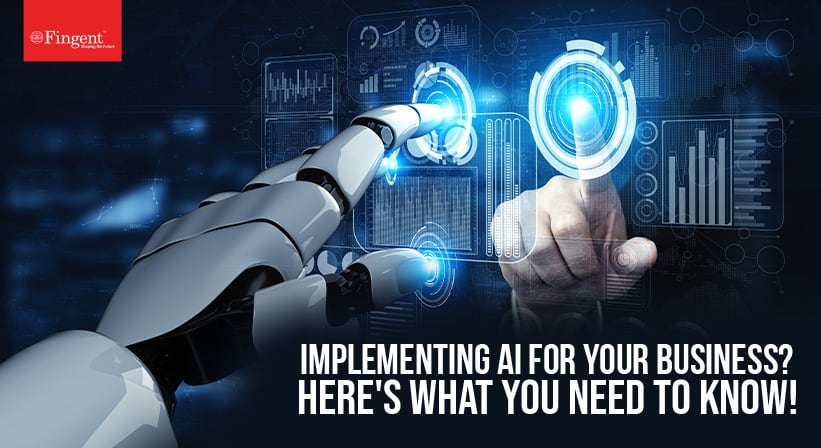
A Deeper Look into Quantum and Neuromorphic Computing
Neuromorphic computation and quantum computing always seemed that they were years away. The fact is commercial neuromorphic chips and quantum computers are in use today. These two new technologies are going to change what looked like a straight path to Artificial Intelligence.
1. Neuromorphic computation
Neuromorphic computation attempts to imitate the way a human brain works. In simple terms, hardware and software elements of a computer are wired to mimic the human nervous system and cerebral system.
The goal of neuromorphic computation is to create devices that can learn, retain information, and make logical deductions just like a human brain does. It also attempts to imitate the human brain by searching for new information.
However, unlike quantum computing neuromorphic computing does is not that demanding. Where quantum computers need temperatures close to absolute zero, neuromorphic computers can easily work in normal conditions.
This increases its practicality and potential to integrate this technology in all kinds of devices.
2. Quantum computing
Quantum computing deals with the world of atoms and subatomic particles inside those atoms. Unlike neuromorphic computation, quantum computing works on the principle of quantum entanglement.
So, the smaller the computer gets, the more powerful they seem to become. Quantum computing provided powerful new possibilities.
Though it is more complex than traditional computing, quantum computing opens the door to potentially solving very large and complex computational problems. It can potentially deliver a big computational upgrade for ML and AI computing.
Quantum computers will not replace traditional computers. Instead, they will require the support of traditional computers for their specialized abilities.
Read more: Driving Business Innovation and Success Through Sustainability

Industries That Can Leverage Quantum Computing and Neuromorphic Computation
1. Industries That Can Leverage Neuromorphic Computation
a) Aerospace and defense: Neuromorphic computing architecture can help in pattern recognition, event reasoning, and robust decision-making. It can also aid in adaptive learning and autonomous tasking for energy-efficient agile Air Force platforms.
b) Self-driving cars: Similar to space communications, neuromorphic computing enhances self-driving. In imitation of the human brain, neuromorphic chips attempt to think and learn on their own and then adapt their learning to unexpected scenarios on the road.
While conventional computers run commands sequentially, neuromorphic computers process and store data almost at the same time. This makes self-driving cars more energy efficient. It can also help autonomous vehicles learn skills and execute tasks more efficiently.
c) Healthcare: Neuromorphic platforms can be used for the hardware-based implementation of ML methods in treating Chronic Obstructive Pulmonary Disease (COPD) in home-care environments. Real-time analysis of data can be obtained by bringing data from the backend onto a neuromorphic chip.
Furthermore, securing sensitive medical data on a single chip complies better with patient privacy regulations. Since neuromorphic platforms process data near a patient, it offers a large fault tolerance for medical applications.
Moreover, hardware-based neuromorphic systems require less computational power making them perfect for PoC medical devices.
2. Industries That Can Leverage Quantum Computing
a) Aerospace: By considering an exponential number of variables, quantum computing could help determine the optimal alternative for each route. It can also help find the best way to allocate resources so that the crew and passengers are impacted as little as possible.
b) Healthcare and Pharmaceuticals: Harnessing the power of quantum computing can significantly accelerate the timelines of various stages of the pharmaceutical research and development process. It can help life science companies by accelerating the speed of the pre-clinical phase and reducing the cost of drug development.
c) Finance: Quantum computing will be able to help solve the problems of customers in finance institutes. It can optimize investment portfolios and financial derivatives. It can also enable the institutions to accurately characterize anomalous transactions and rapidly detect fraud.
d) Chemistry: It is likely that quantum computing can be applied to simulate the properties and behavior of new molecular structures in chemistry. It can address the probabilistic challenges of quantum mechanics. In the future, quantum computing is expected to predict molecular properties for new molecules.
Read more: Data and AI: How It Has Transformed Over The Years And Trends To Watch out For!
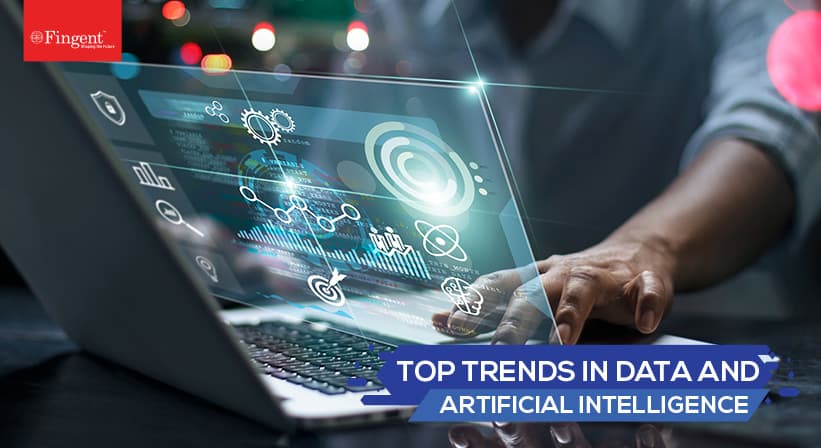
Conclusion
In the coming years, advances in Artificial Intelligence will reach the superintelligence stage. However, the transition to new technology has already begun.
Most businesses are incorporating this unique fixture as it has helped with better sales and forecasts. It has also given businesses growth opportunities. We are sure you want to get started with this too.
Give us a call and let’s discuss what is best for your business.
Stay up to date on what's new

Featured Blogs
Stay up to date on
what's new



Talk To Our Experts
Businesses are always on the lookout for ways to optimize processes and gain greater visualization. When processes work efficiently, the output of the product is higher. This leads to workflows that run smoothly with minimum errors and higher capacity. A good reason for the growing popularity of process automation and visualization.
Automation and visualization are the future of the business strategy. Gone are the days of carefully filling in graph paper by hand. Today, process automation and visualization help enterprises up their game by allowing access to real-time models capable of accurately capturing the nuanced data sets.
In this blog, we will expand on how enterprises can up their game with process automation and visualization.
How Enterprises Can Up Their Game with Process Automation and Visualization
Data visualization enables human operators to manage vast sets of data, glean insights from different information sources, and perform operations more intuitively and strategically.
In the current data-immersed world, data visualization can significantly add value by conveying large datasets visually. What does this mean for your business? This means a better grasp of critical customer data.
According to the IDC, the collective sum of the world’s data is predicted to grow to 175 zettabytes by 2025. Processing such large amounts of data can become a problem.
By allowing automation and the right programs to sort out your business data, you can generate graphs. You will be able to use these graphs to up your game in business competition.
Data visualization offers businesses the hope of getting a grasp on data. Fortunately, the human brain can process and recognize trends, identify potential issues, and forecast future development from clear visual displays.
Read more: How Powerful Is Data Visualization With Tableau
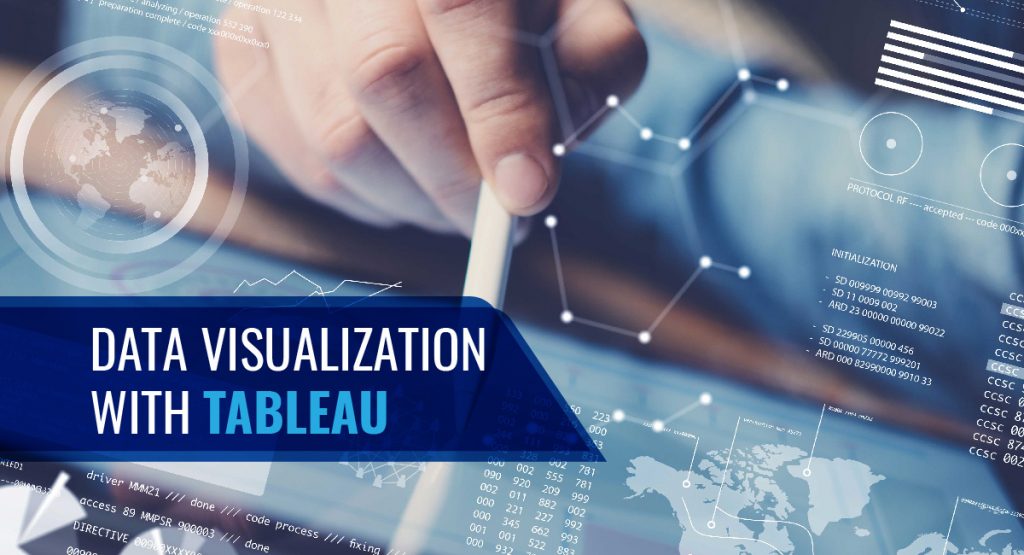
Look Out for Upcoming Powerful Trends in Automation and Visualization
1. AI and ML
Artificial Intelligence and Machine Learning render visualization more accurate and efficient. These technologies enable businesses to handle customer feedback without bias. Process automation allows you to sort the feedback in real-time and according to your specifications.
2. Unlock Big Data with Data Democratization
Large amounts of data are hard to understand. It requires data scientists and other experts to unlock its treasures. Not anymore. Advanced no-code data analysis platforms can automate your data process. This is called the democratization of data.
Democratization of data leaves it malleable and easy to display allowing your employees any level of tech support. When this is paired with the data visualization type, it can unlock big data results for teams at all levels of your organization.
3. Video Visualization Is Here to Stay
Young and old alike tend to retain the information they see over what they hear. This would mean that video infographics will be the future.
Video applications for business strategy and customer retention are key areas for future strategic data visualization implementation.
4. Real-time Visualization for Early detection
Knowing a problem at the exact moment it arises can assist businesses in customer retention and brand presence. Early detection can have a dramatic impact on the bottom line.
Process automation can help run a dashboard that allows users to submit their error reports to your customer support. Then the reviews can be tagged and analyzed using sentiment analysis.
5. Mobile Optimized Visualization
An increased number of people access the internet on their mobile devices. Your business needs mobile-optimized data visualization to stop customer churn.
It enables you to know if your potential customers are learning about your services through social media or an online review board. Though mobile-optimized visualization is an easy step, it is critical to keep your business on top of the game.
Read more: 7 Awesome Data Visualization Tools

Business Applications of Process Automation and Data Visualization
1. Financial Service and Insurance
The finance service industry is a prime candidate for process automation and data visualization. Two top requirements of this industry are customer response time and compliance with strict regulations.
When automated, quick decisions can be made based on pre-defined rules like loan applications, claims processes. businesses can use data visualization to make reliable predictions or risk calculations in the financial industry.
Insurance fraud can cost billions of dollars damage. Process automation and data visualization can improve fraud detection.
Read more: Deploying RPA for Finance, Healthcare, and IT Operations.

2. Distribution and Logistics
Process automation and data visualization can minimize costs by planning transport promptly, reducing costs of downtimes and maintenance.
3. Sales
Data visualization can greatly improve relationships with your customers. It helps you know the needs of your customers better, and address each of them directly in real-time.
4. Marketing
Data visualization and process automation can reduce marketing costs substantially. These technologies can help evaluate the demographics, location, transactions, and interests of your customers. Visualizing these details can help you understand their purchase patterns.
Thus, data visualization can be used to create and target new customer segments. Cross-selling is another advantage. At the same time, data visualization may reveal that customers are dissatisfied. Identifying this and responding quickly can counteract the situation to retain your customer base.
5. Healthcare
Process automation and data visualization enable cheaper healthcare. It can help predict disease occurrence and proactively propose countermeasures.
6. Science and research
Visualization enables the evaluation of the data of an experiment. Process automation and visualization can be advantageous especially when an experiment generates large amounts of data within seconds.
7. Production
Large amounts of data are generated during production. Using process automation and visualization can help plan preventive maintenance and prevent production delays or downtimes.
Prepare Your Business For The Future With Fingent
Fingent helps enterprises automate document-based processes. We can help you create safer sharing and collaboration. Our platform allows you to create teams, assign roles and privileges, and streamline communication.
Fingent’s partner integrations allow you to use it together with your existing software. Our top-level measures protect our users’ data. The encryption we provide ensures content integrity and prevents alteration.
Fingent top custom software development company can help your organization reach the goal of paperwork elimination. Doing so can lead to efficient resource distribution throughout the organization.
What’s more, it reduces carbon footprint. Our experts bring along specializations supported by scientific rigor and in-depth knowledge of advanced techniques to design, develop, and deploy solutions for process automation and visualization.
Give us a call today and let’s get talking.
Stay up to date on what's new

Featured Blogs
Stay up to date on
what's new



Talk To Our Experts
The property sector in the United States came to a crashing halt in March 2020, when the first wave of COVID-19 hit the nation. Mortgage rates dropped by 34%, affecting home buying and selling plans. Retail vacancy rates spiked up to 20% and commercial property loan delinquency rates soared up to 11.49% in Q2 of 2020. Months of shutdowns, social distancing regulations, traveling curbs, stay-at-home mandates, remote working, online shopping, and home delivery led to a drastic decline in occupancy rates and rents. People shifted their working spaces from office to home which slashed the demand for commercial rental spaces. The liberty to “work from anywhere” triggered a mass exodus from expensive urban areas to affordable suburbs and rural areas, lowering home value growth in metros.
All these challenges forced the property sector into urgent changes. Along with reconciling fiscal and monetary policies, real estate leaders must capitalize on property management technologies – specifically automation – to recover and rake in profits. Bitwise Industries observes that “the immediate need for innovation and automation is now a necessity to not only survive but to truly thrive in the real estate industry.”
Read more: What’s in Store for Real Estate This 2022

How does automation help a highly fragmented industry like real estate to manage multiple operations in one place and sync a horde of activities?
Automation in Real Estate: Fostering “All in One Place – All in Sync”
McKinsey’s survey identifies that automation and remodeling of work processes enable businesses to control costs and mitigate uncertainty during recessions. A real estate firm needs to efficiently coordinate multiple business functions such as managing buyers, sellers, and properties, contracting and leasing functions, property listing and tracking, finance and accounting, and so on. Automation helps sync and manage all these activities in one place. Here’re the top five real estate processes that can benefit from automation:
1. Optimize internal workflows
Automating internal workflows improves your team’s productivity. Having a well-synced project management system with up-to-date dashboards, real-time analytics, and reports, automated document flow, task reminders, deadline notifications, meeting schedulers, etc. can save your workforce’s time and improve their focus on value-adding functions.
2. Enhancing customer journey
Custom real estate software and integrated PropTech solutions allow customers to create, view and modify personalized wish lists, look up and find property information, and filter details based on different criteria. Realtors can leverage Virtual Reality techniques to improve customer experience by offering virtual tours, 360-degree property views, and 3D site plans. Integrating mortgage calculators, neighborhood descriptions, and an easy ordering process enables customers to buy, sell, or rent properties easily.
Read more: How Virtual Reality Can Transform Real Estate Operations

3. Improve sales and marketing processes
Real estate marketers and salespersons can leverage automation to sync all their leads in one place, access lead information anytime on their phone, create custom client lists, save time with lead routing, automate drip email campaigns, set up activity-based email workflows, keep track of previous interactions, and send out reminders and updates to clients on time. All these lead to higher conversion rates.
4. Manage invoices and finances
Manual invoicing and payment processes consume your team’s valuable time and affect your organization’s scalability. Automated, all-in-one property management software allows you to centralize, oversee, and streamline the payment process without any paperwork. Automating financial management improves your processes with customers, partners, and suppliers. You can easily track orders, gain approvals, send notifications, and obtain real-time visibility into each transaction using the real estate management software.
5. Carryout field and property inspections
Leading property inspection software offers customizable templates and checklists for property managers, field inspectors, site auditors, and clients to schedule inspections, record on-site data, and auto-generate reports. Automating the whole inspection process reduces both manual errors and report submission time. This helps find out the quality and condition of a property (home), secure governmental approvals quickly, and fix the best price for the listed property.
Benefits of Real Estate Automation: A Quick Recap
- Streamline workflows and back-office tasks
- Reduce tedious paper works and manual jobs
- Improve focus on value-adding functions
- Monitor property managers and personnel dispersed across various locations
- Implement innovative ways to showcase and market properties
- Process invoices and payments on time
- Improve customer service and attract more buyers
- Eliminate supplier management hurdles
How Fingent Enables Real Estate Companies to Leverage Automation and Digital Technologies
We help real estate companies and property managers to prepare for a digital, data-driven, and sustainable future. Our projects demonstrate the value we deliver to the real estate industry.
#1. Rentmoji, The All-in-one Property Management Platform
Inefficient communication systems, disconnected business segments, and poor customer experience failed to deliver the expected ROI to our customers. They needed a single platform that centralizes all the aspects of the property management life cycle. This resulted in the development of Rentmoji, an all-in-one property management suite that helps streamline and manage diverse operations in the industry.
Analyzing the challenges faced by different stakeholders in the real estate business, we automated key processes and implemented top-notch security solutions. Rentmoji now serves as a robust single-source property management solution for residential rental properties (Single-Family Rentals and Multi-Family Rentals), CAM, and HOA management.
- The company grew from 2 to 160 employees within two years of implementing the software
- Customized portals and integrations for tenants, owners, and vendors
- Structured lead management process and extensive syndication
- Enhanced speed-to-market with cloud capabilities and automation
#2. End-to-end CRE Transaction Platform
An investment brokerage firm in the United States was struggling to adapt to the changing Commercial Real Estate (CRE) market demands. They required an integrated solution that will offer them real-time visibility into the performance of property listings and visualize data insights for brokers and investors to make better decisions. To help them realize the benefits of data-backed decision-making, we created a modern net lease trading platform. It improved their CRE transactions and sales. The customer can now manage 10,000+ listings via the trading platform and track 1031 exchanges effectively. They also have access to reliable ROI metrics based on current and future trends.
- Predictive analytics matches properties to investors’ preferences and expectations
- Projected revenue charts and financial summaries help business analysts
- Place and manage offers on multiple listings and update them on the fly
- Brokers can use the application to easily demonstrate listings to prospective buyers
Fingent has also helped develop custom real estate software and PropTech solutions for leading real estate brands like SimpleRent, Easa Saleh Al Gurg Group LLC, and WRI Property Management.
Leveraging the Latest in PropTech to Navigate the New Normal
The global pandemic emphasized the need for all aspects of real estate to embrace technology. Buying software to merely run your operations remotely isn’t enough. Technology capabilities should allow you to generate value and respond swiftly in a pandemic-afflicted economy. 58% of real estate organizations struggle to integrate their legacy applications with innovative tech solutions. It exposes these businesses to major financial and operational impediments. Fingent custom software development experts aim to help such businesses by bridging their technology talent gaps and developing all-in-one, integrated, custom PropTech solutions.
Stay up to date on what's new

Featured Blogs
Stay up to date on
what's new



Talk To Our Experts
Robotic Process Automation (RPA) is not just a “nice-to-have” option anymore. If you want to remain competitive it is an absolute necessity.
As a most promising technology enabler, RPA helps improve speed, quality, and productivity. RPA strengthens the organization, ensuring that it is ready to deal with disruption and change. This blog will discuss how it is making a mark in Finance, Healthcare & IT operations.
What Is RPA?
Robotic Process Automation (RPA) is an end-to-end approach that can automate workflows without the intervention of a human being. This approach allows users to configure software that enforces business processes. RPA software can collect, interpret and orchestrate applications to perform various repetitive tasks.
RPA is a technological breakthrough for industries like finance, healthcare, IT, telecommunications, banking, insurance, retail, property management, and many more. Industries that implement RPA can automate their workflows, infrastructure, and other labor-intensive and time-consuming processes.
RPA is both cost-effective and user-friendly. It is no surprise, industries are racing to unlock value from RPA, including digital labor.
Watch now: How Robotic Process Automation Is Building Better Workplaces
How Is RPA Revolutionizing Industries?
- Increased Accuracy: Bots are less prone to make mistakes or typos than human workers.
- No interruption of workflow: Virtual robots can operate 24/7 without staff initiation.
- Meet strict compliance standards: Configured bots can provide an audit trail for each step and retrace the steps, in case of a process review.
- Work with existing systems: Robots do not need extensive IT resources; they work with the layers of existing applications.
- Improve employee morale and experience: Bots offload manual tasks from employees and enable them to focus on strategic, revenue-producing activities.
These advantages sound good. But, how does this ‘digital worker’ (RPA) streamline business processes? Let’s see.
How Can RPA Streamline Processes?
1. Employee Onboarding
Employee onboarding is a costly and time-consuming process. Zippia’s research showed that the average cost per hire is $4,425, or 40% of an employee’s base salary. Not just that, it takes about 36 to 42 days to complete the onboarding process.
Fortunately, RPA can reduce both the cost and the time taken to onboard an employee. How can it do that? It can do it by automating all repetitive and rule-based tasks.
For example, a bot can accurately source an applicant 24/7, and without any bias. After which, it can assist in screening resumes and candidates. Further, a bot can handle much of the paperwork that the company needs to fill out.
2. Auditing
Although audit practice has improved over the last 30 years, a massive amount of manual, repetitive, and rule-based tasks still take up much of the auditor’s time.
Examples of these tasks include file organization, the performance of basic audit tests in excel, manual annotations, and many more. These tasks are not only labor-intensive, but they are also prone to error.
RPA offers the ability to connect otherwise unintegrated audit activities. In addition to the obvious time-saving benefits of RPA, there are financial advantages. For instance, PwC estimates that 45% of repetitive work can be automated, and this would save $2 trillion in global workforce costs.
Beyond simple cost savings, automation can enhance an auditor’s ability to do his job. By freeing up an auditor from mundane, repetitive tasks, RPA allows them to focus on the more complex aspects of their job.
By sifting data more accurately than human auditors, RPA can help human auditors to scrutinize whether an accounting treatment or client behavior is reasonable. With such improved efficiency, auditors can make a final determination about optimizing costs.
3. Invoicing
Invoice processing is a crucial business operation. Yet, these tasks are labor-intensive, error-prone, and do not directly generate revenue. RPA is designed to manage such tasks effortlessly and efficiently.
For instance, when invoices come through various channels, they have to be matched to purchase orders, and then most often, they need to be approved by different people for payment.
RPA allows you to automate the purchase order matching process to flag any errors for further scrutiny before submitting the payment. You and also create rules to send invoices to the right people for approval automatically. RPA can automate all the data entry and manual processing involved in accounting and finance.
These are just a few examples that show how RPA can drive faster response and improve business processes.
Now that we understand how RPA streamlines processes, which of the top industries benefit from adopting RPA?
Read Whitepaper: Learn how RPA can bring a difference to your business and give you a competitive edge!
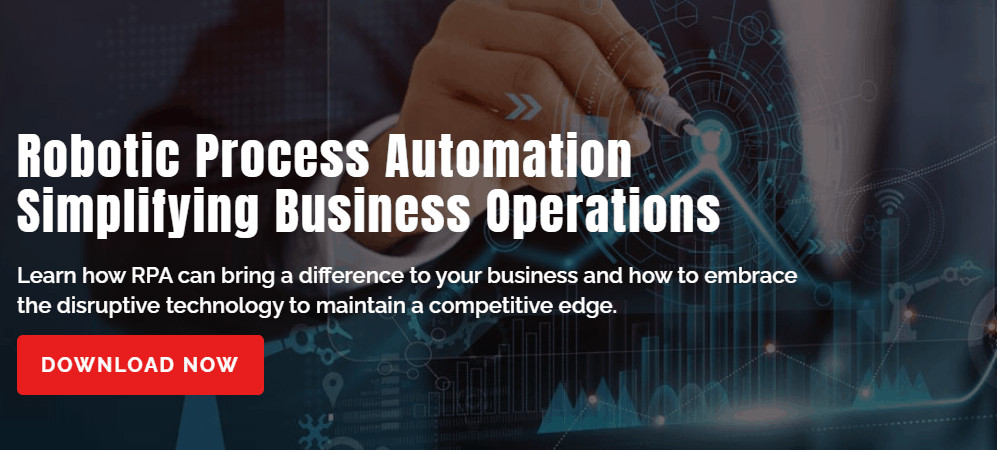
Top Industries That Can Benefit
Some industries that think automation is a costly effort have witnessed early adopters of RPA outperform the rest of the businesses with an increased ROI. According to Gartner, the RPA market is expected to grow at double-digit rates through 2024.
1. Robotic Process Automation in Finance Sector
Finance sector applications include managing customer accounts, migrating data between accounts, updating loan and mortgage data, and more. Just by defining the rules, Robotic Process Automation can help financial services to meet compliance standards.
RPA technology is accurate. Hence, it significantly reduces risk in the finance sector. Faster RPA cycles are highly scalable and rapidly deployable.
2. Robotic Process Automation in Healthcare
The pandemic has increased the volume of patients substantially, and healthcare industries are prioritizing efficiency and cost reduction. These two are major benefits of RPA implementation in the healthcare sector.
- Improved quality: RPA implementation automated and simplified entry process, claim process, maintenance of medical records. This enabled healthcare personnel to tackle the large volume of patients, especially those who need individual care and attention.
- More human workforce to care for more patients: RPA implementation replaced the workforce that performs mundane repetitive tasks. Healthcare professionals now have more time to spend on core activities rather than perform mundane tasks.
3. Robotic Process Automation in IT
Today, business operations depend on how well the IT system is managed. Leveraging RPA in IT operations is worthwhile. Consider why:
- Helps manage high volumes of data: Managing high volumes of data from different locations and different departments can be challenging. In contrast, RPA can process large datasets with greater agility, and complete the process faster and with no errors. Moreover, Robotic Process Automation systems can also update changes in the data in real-time.
- Enhances customer experience: Employees are required to respond to any inquiry adequately and on time. Anything less could push your customers to your competitors. Automating repetitive tasks frees up agents to focus on more customer-related tasks such as pitching in a sale or providing end-to-end product engineering solutions.
- Better patch management: Manually patching IT systems is always a bad idea because it leaves more room for errors and is time-intensive. Implementing RPA can help synchronize the vulnerability database, scan machines for missing patches, and deploy the missing patches. This way automation ensures that the system is always protected.
Read more: Drive business growth with RPA!
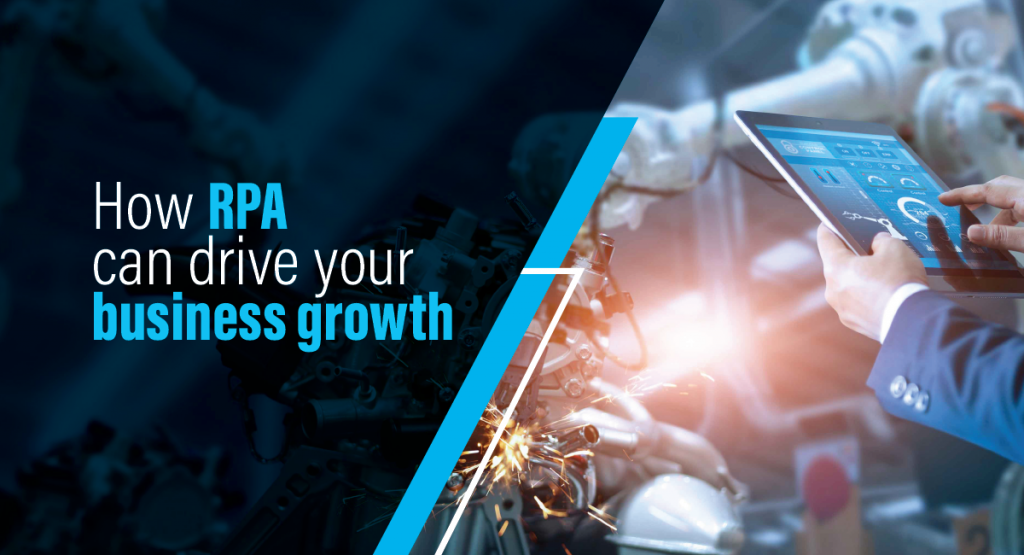
How Fingent Can Help Deploy RPA Seamlessly
Successful implementation of Robotic Process Automation depends on a clear understanding of the task at hand. At Fingent we can make the implementation a lot easier. We can help you automate parts of your process or the entire thing.
With automation under one wing and cognitive technologies under the other, Fingent software development experts ensure you are in complete control. We can help you discover new, effective automation ideas. As a professional partner, we help you identify your strengths and areas of improvement and then work with you to build an action plan with tactical and strategic solutions.
Fingent also provides both onsite and offsite training and maintenance to ensure you get maximum ROI. Give us a call and let us help you get this rolling.
Stay up to date on what's new

Featured Blogs
Stay up to date on
what's new



Talk To Our Experts
Educational institutions were among the most impacted aspects of society when the coronavirus unleashed its hold on the world. Over the course of 18 months schools, colleges, and universities all around the world have faced more than their fair share of problems. No matter how difficult adapting to a completely different mode of teaching and learning is, many institutions faced the challenge head-on, pivoted, and caught up with the rapid change successfully.
In this blog, we will examine the challenges that loomed in front of the admission and college selection process and how rising technologies like VR & AI have helped tremendously in successfully dealing with these challenges.
Read more: The future of Augmented Reality in EdTech!

The Pandemic – A Massive Challenge for Students
Transitioning into the university lifestyle is usually a very significant part of an individual’s life brimming with feelings of anxiety, trepidation, and excitement. Adding into this already complex intersection of negative emotions, the aggressive transmission of COVID-19 has altered the higher education landscape on a colossal scale.
The pandemic created exponential threats to a student’s experience of streamlined higher education. Poor psychological outcomes, increasing levels of social anxiety, inducing feelings of lethargy, and reducing overall academic performance are predicted in the recent college students. To top it all, new applicants are facing the most difficulty deducing if a college is a good fit for them or not without ever entering the campus because of the pandemic restrictions.
Admissions and the College Selection Process During The Pandemic
The pandemic has forced universities and colleges to alter admission policies in recent years. There are constant updates in admission procedures that everyone must be aware of, whether it’s the extension of application deadlines or a change in how the admissions department will be evaluating applications.
1. New Selective Process
Many institutions dropped stereotypical testing methods and canceled extracurricular activities, and admissions counselors have changed how they examine and evaluate applications. Admission staff are encouraging potential students to showcase their caliber, personality, and passions during admission, particularly how they pursued the latter accompanied by a world plagued by COVID-19.
2. Efflux Of Applications
Since most popular universities and colleges decided not to consider SAT/ACT scores, they have faced a surge of applications creating greater diversity in the application pool. This hope is slightly misleading. Theoretically, it may seem as though the students have a good chance at admission, but this does not always translate into reality as these institutions still remain very selective.
3. Prosperity In Medium-Level Institutions
A great number of students who didn’t find acceptance in popular institutions found their hope in Medium-Level Institutions
4. Travel Restrictions
Due to travel restrictions, colleges provided online platforms for applications and even conducted interviews for admission through online mode.
Decrease In College Enrolment and Its Effects
Although universities and colleges have tried their maximum to keep admission procedures streamlined, College enrolment has seen a massive slump due to the pandemic. There is a drop of almost 1 million college students enrolling in higher education since before the pandemic began. Compared with the fall semester before the pandemic in 2019, undergraduate enrolment has dropped a total of 6.6%, representing the largest two-year decrease in more than 50 years. Thousands of students, many from low-income families were forced to delay school or drop out because of the pandemic and the economic crisis it has created.
Health and economic factors play into why hardly any students are enrolling in college during the pandemic and why people are opting for better-paying jobs instead of spending money on college. Given that cost is still the biggest obstacle, it isn’t surprising that prospective students suggest “free college” for a bigger impact on them finishing or returning to college – a very interesting insight that legislators are currently debating on.
The impact of having students not enrolling in college affects their individual earning potentials, as well as the economy of the country. Research shows that getting even a simple post-secondary education can lead to higher wages, lower unemployment, and greater lifetime earnings. Without this, fewer people graduate with the skills, credentials, and degrees required for a higher-paying job, which means unemployment for the student and a lack of a skilled workforce for the community.
Read more: Answering the top burning questions on AI implementation for businesses!

The Timely Rise Of VR & AI
“Change is inevitable and the disruption it causes often brings about new opportunities.”
Virtual Reality (VR) and Artificial intelligence (AI) are two cutting-edge technologies on the rise today. Their practicality has been proven in a number of fields and in the midst of the pandemic, these technologies grow greater.
Higher education administrative processes have started using AI to recruit, admit and enroll students. It acts as a powerful instrument in nurturing innovation and entrepreneurship in universities and it can accurately estimate demand, which means it can predict with precision how many applications to accept to achieve prime enrolment numbers.
Here are a few ways how AI helps:
- AI-backed software scores an applicant against a set of significant factors based on past applicants and builds software for higher education. This is comparatively easier and faster than admission officers assessing each and every application on their own.
- AI eliminates situations where an admissions officer might know an applicant and be biased, robotically flagging a personal connection that exists between two parties.
- AI can customize, speed up and personalize the admissions process for intercontinental students, including visa processing, housing selection, and course registration.
- AI has the latent to create interventions for students suffering from homesickness or social isolation and is thereby an important tool for student welfare, ultimately attracting more student applications.
#1. How Fingent Utilized AI-enabled Chatbots To Create Enhanced & Engaging Learning Experiences
Fingent helped the University of North Carolina develop an AI-driven ecosystem powered by IBM Watson that facilitates students to interact with an AI-enabled Teaching Assistant(AiTA). Multiple Chatbots are set up to manage a wide range of student inquiries. Also, important documents and teaching materials are uploaded with keyword and tag searches to make them easily accessible. The environment enables to create a healthy student-teacher relationship, instruct and engage students effectively, and improve students learning experiences.
Here are a few ways how VR helps:
- A VR package allows overseas students to get a sense of what the community and campus are like.
- It creates a high-quality image of the college and by using cost-effective devices like Google Cardboard, keeping costs in check becomes a less daunting task.
- With the help of VR, you can give enrolled students (who have not already seen the campus) a more profound sense of campus life and community. The idea is to charm them to make time for an in-person campus tour.
#2. More On Gear Up – Deploying VR For Campus Visits
GEAR UP is a virtual reality-based app that helps high school students experience a college campus through Virtual Reality and 360 Video. GEAR UP creates direct connections to college campuses and curates the college choice process. It empowers individual exploration and is completely free to download, making it easily accessible. It invites students to explore colleges and focuses more on first-generation students. The Introductory videos are anticipated to assist students in finding a suitable college to fit their interests and give them a sense of where they might want to attend. GERA UP is created as an initiation to help increase the number of students from low-income backgrounds who seek to obtain a secondary or post-secondary education.
Stay up to date on what's new

Featured Blogs
Stay up to date on
what's new



